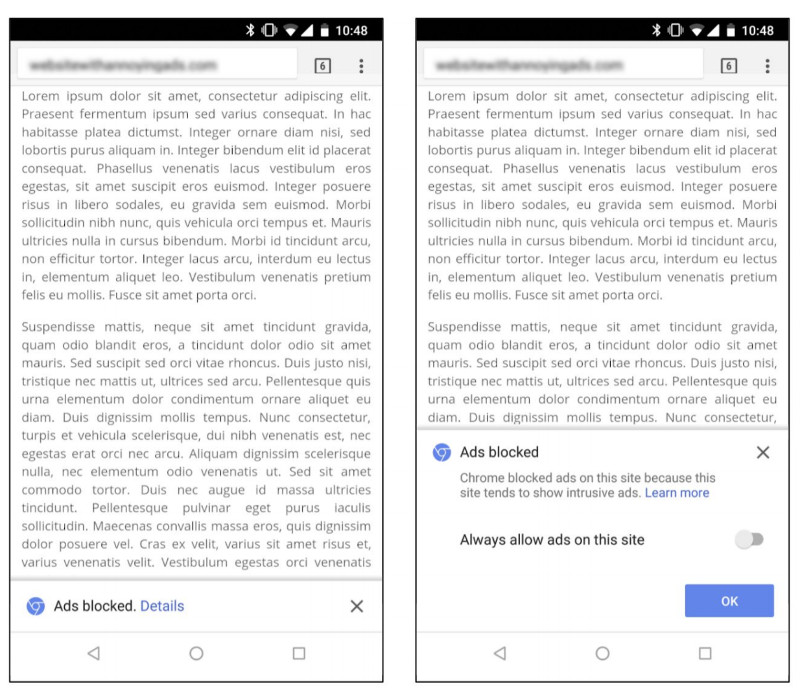Google explains how its Chrome ad filter will work


In a couple of days, Chrome will deploy its built-in ad filter that can keep the most annoying types of ads on the internet out of sight even if you don't use an ad blocker. In a post on the Chromium blog, Google has revealed more details about the filter before it drops, going under the hood to explain how it works more clearly. The big G says it starts by evaluating sample pages from a website a determining whether it has any advertisement that violate the standards set by the Coalition for Better Ads.
If a website doesn't have the type of ads the Coalition's testers found especially annoying -- such as prestitial ads with countdowns, pop-ups and advertisements that auto-play with sound -- they it gets a passing grade. Websites that do have them get a Warning, while those that consistently violate the standards and refuse to remove the offending ads get a Failing grade.
When you visit a visit a URL on Chrome, the browser's filter cross-references it with the list of websites that failed the Better Ads Standards. If it determines that you are indeed visiting a domain with irritating ads, the filter will check network requests on the page against ad-related URL patterns in order to block those ads. That doesn't mean it's taking the right to see those advertisements away from you, though. (Hey, if you like watching full-page video ads that blast music on max volume, then more power to you.) The browser will tell you that it blocked ads on the site, and it will give you the choice to allow them to load whenever you visit.

This is what that notice will look like on mobile. On desktop, the notification will show up on the address b bar.
Google says that while Chrome's filter will automatically block ads, its goal isn't to filter all advertisements all the time. The Chrome team is giving websites 30 days to fix the advertisements that don't adhere to the Better Ads Standards, and it's only blocking them if they remain non-compliant even after getting a warning and a month to make things right. By giving them a warning, it's hoping to convince website owners to remove any intrusive ad themselves. So far, the tech titan's plan seems to be working, since 42 percent of sites that were failing the Standards have already resolved their issues and now have passing grades.
Source: Chromium
via Engadget RSS Feed "http://ift.tt/2BuUdNx"
Comments
Post a Comment